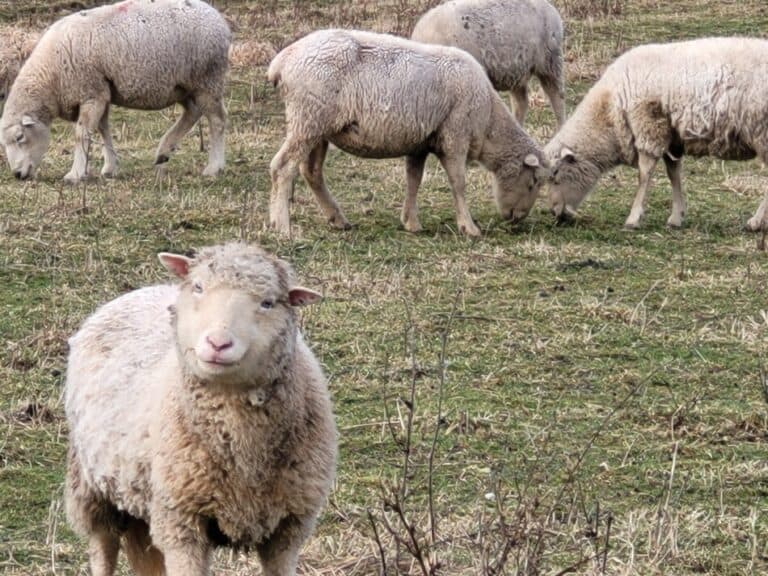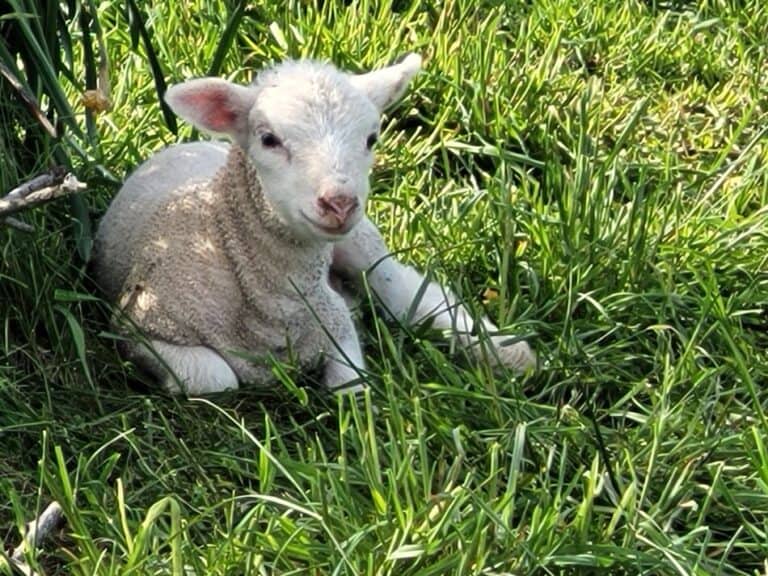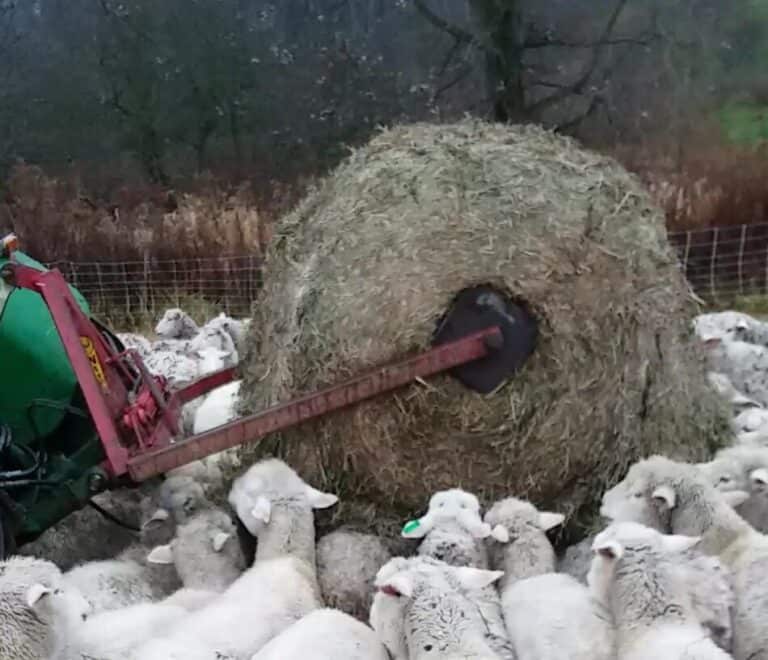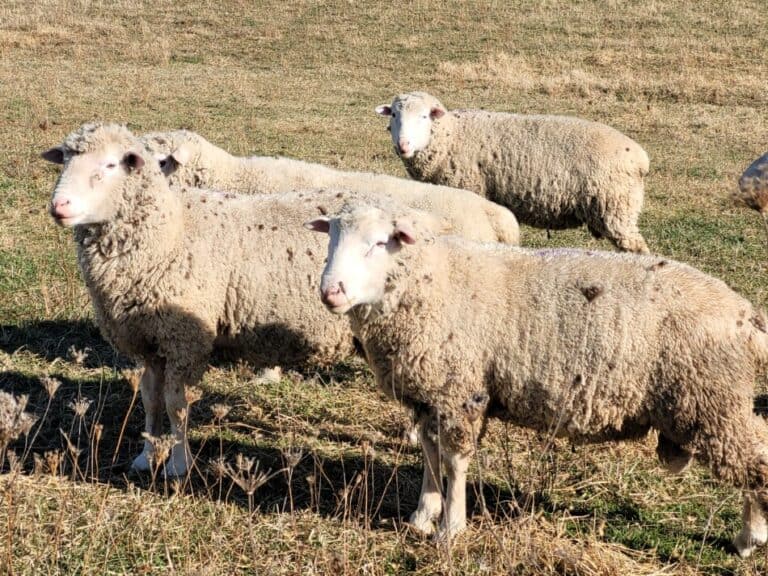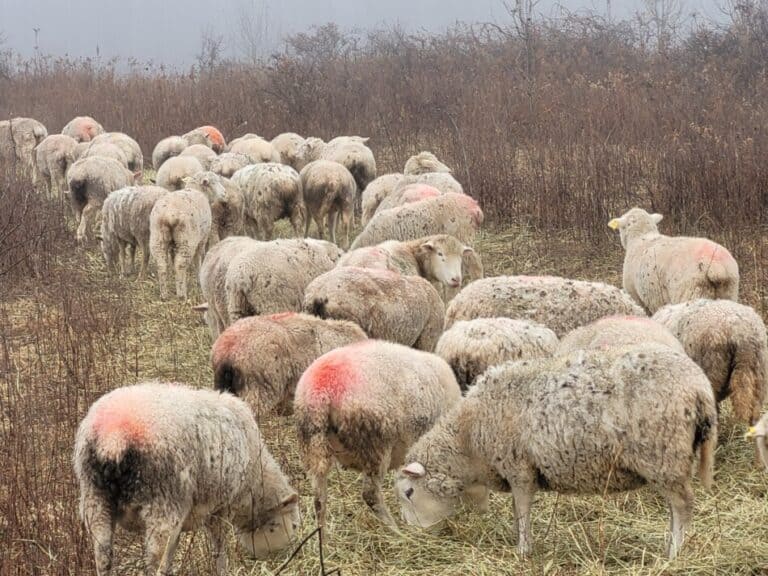What Are The Differences Between Sheep And Lambs?
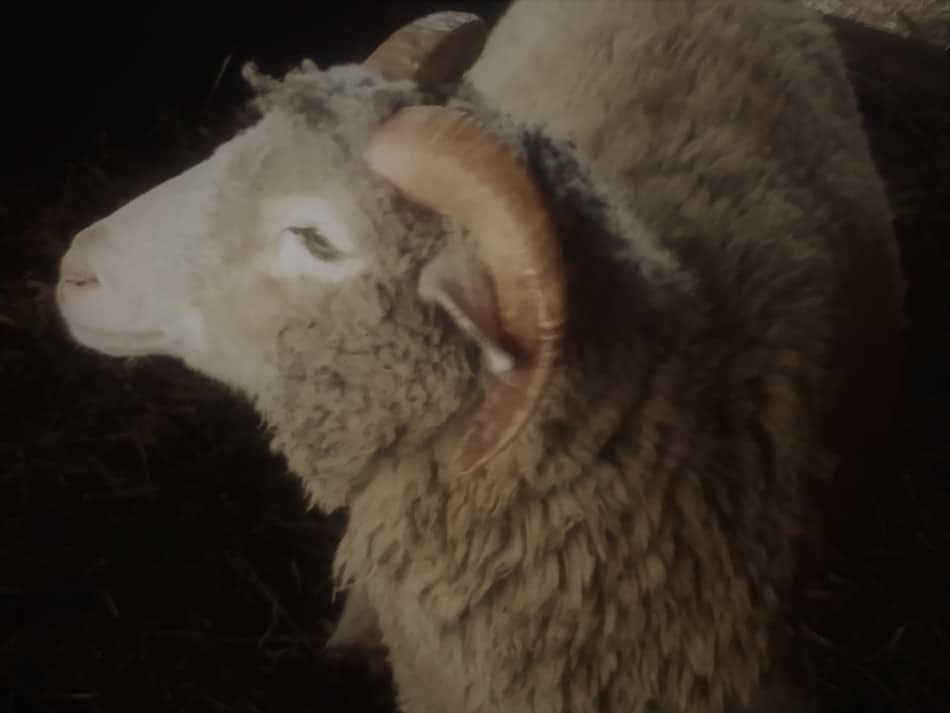
It can be a little confusing to understand the differences between sheep and lambs, since most people use the terms interchangeably! We’ll go over the key differences between sheep and lambs, so you can easily tell which is which.
The main difference between sheep and lambs is age. Lambs are sheep up to one year of age. Lambs are called sheep when they are over one year of age.
The word sheep is an all ages term. It applies to new baby lambs as well as older breeding stock or pet animals. The word sheep also applies to male as well as female animals and both meat and wool producers.
Lamb is actually a term for sheep that are under one year of age. When sheep are sold age really matters. Animals under 12 months will be sold differently and bring more money than animals that are over 12 months of age.
Where this all gets a bit confusing is that lamb is also the word used to describe the meat of a sheep less than one year old. Mutton is the term for sheep meat that is from animals that are older.
How to tell the age of a sheep
Since age of the sheep is so important in the selling price and the animal value, how do you tell the age of a sheep? Actually it is simple, by the teeth.
Sheep get two teeth in at one year of age. These teeth are permanent. Each year until the animal is four it will get two more teeth, so by her fourth birthday a ewe will have a total of 8 teeth. The only way to accurately determine the age of a sheep is by looking in it’s mouth.
Characteristics of an mature sheep
Mature sheep include ewes, rams and sometimes wethers (in the cases of sheep with very valuable wool or pets) that are over one year of age.
Mature sheep have a full set of teeth, generally a more filled out body and are taller than lambs of the same breed. Mature sheep will also have a more balanced look to their body as a whole, whereas young lambs look out of proportion, they are gangly and all legs.
The job of a mature sheep both male and female is reproduction. These sheep are kept to produce the next year’s lamb crop.
In mature sheep:
- Ewes will be full bodied but not fat and have an udder if currently nursing lambs.
- Rams tend to be a bit larger than the ewes and have a wider forehead, more masculine appearance to their features and a scrotum (most easily seen when viewed from behind the sheep).
Mature sheep will generally flock well, some breeds more than others, and will want to stay with the group. Moving a group of mature sheep is easier than moving lambs since lambs do not flock well.
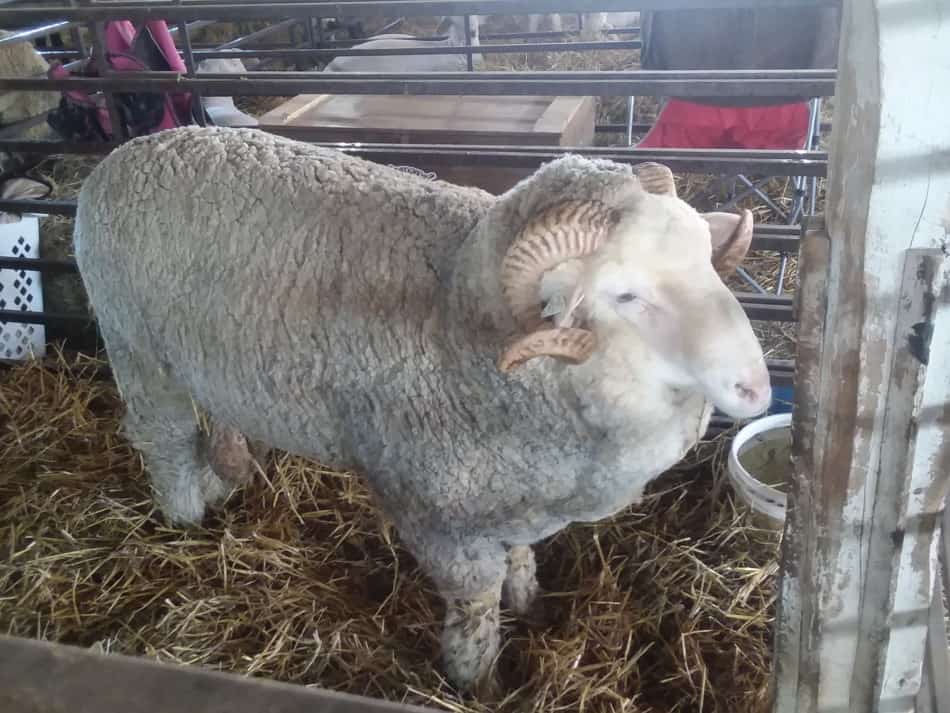
Meat from mature sheep is called mutton
The meat from mature sheep is called mutton. When a ewe or ram is past her or his useful life it will go into the food chain. Meat from these older animals has more flavor and is preferred by more traditional eaters over lamb especially if the lamb was grain fed. The mutton tastes more like the full flavored meat that they grew up eating back home.
We have noticed that a carcass of a full size sheep, over a year old, will yield much more meat than that of a younger lamb. In terms of meat yield per animal mutton gets you more meat if you are buying animals by the head. This makes the best use of the animal itself, reproduce then yield well for meat. Here is a link to an article I wrote explaining the differences between lamb meat and mutton if you want to learn more.
Characteristics of a lamb
Young lambs are uncoordinated and lanky. Quickly they start to grow and get good coordination and become really fast. As they grow they get more muscle and will grow into their legs, the legs will look to be proportional now.
Lambs are spunky and quick, but don’t flock up well like the adults. Moving a group of weaned lambs is not as easy as moving a group of adults, they just behave a little differently. Moving a group of young lambs, like when the moms go to a new pasture and a few babies get left behind, that is hard. They do not flock up at all, (a frustrating experience to say the least).
How fast lambs grow
Lambs that are fed on grass only will finish out (reach market weight) slower than lambs that have access to creep feed. If you have a limited pasture available and are already rotating pastures using a high stocking rate (lots of animals per acre) consider creep feeding the lambs. Creep feeding the lambs means giving them supplemental feed which will make the pasture you have last longer.
Grass fed only lambs is great for the animals, but as mentioned above it will take a bit longer than supplementing with feed. Forage feeding only is the traditional way to feed ruminants, having the lambs at finishing weight around 8 months, depending upon the forage available.
The genetics of the flock, especially the ram since he is genetically half of every lamb, will greatly influence how fast the lambs grow. Meat breed sheep will also grow faster than wool breed sheep. Additionally, a hybrid (cross bred) lamb will grow faster and generally be more vigorous than a purebred lamb.
When do lambs reach market weight
Most lambs reach market weight at 6 months of age. The weight depends upon breed and feeding conditions, so anywhere from 80-110 pounds live weight. Once again this depends greatly upon breed and the conditions in which the lambs are raised.
Lambs are finished when they have filled out their frame (bone structure) with a good amount of muscle and they have a covering of fat on their bodies.
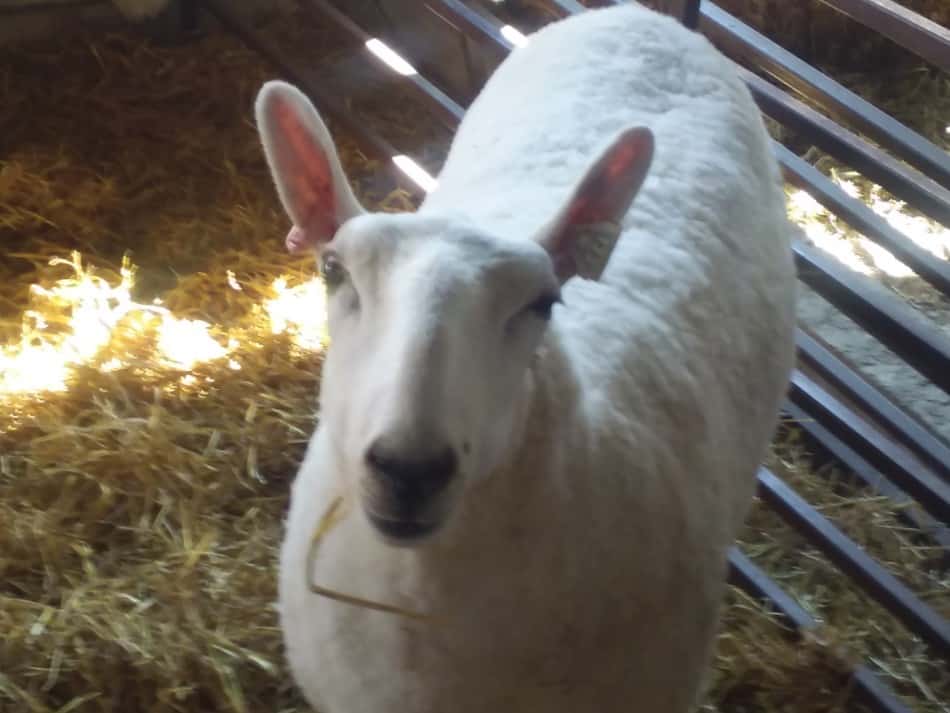
Some breeds tend to finish out early and at a smaller size like Cheviots. At the livestock auction we normally go to when the pen of Cheviot lambs come through they always get top dollar. They look alert and spunky and have a chunky body even though they are a smaller size lamb, about 50-60 pounds live weight.
Other breeds of sheep like most of the wool breeds and the bigger framed meat breeds finish at higher weights. These breeds put on frame first then need time to put on the muscling to fill out the frame, meaning they will be a larger lamb when they reach finished body condition.
Meat from sheep less than one year old is called lamb
Lamb meat is harvested from lambs less than one year old is called lamb. This seems to cause some confusion with the word for the meat and the word for the live animal being the same, since for most animals the name of the meat is different than that of the live animal, for example deer and venison or cattle and beef.
Lambs raised for meat are kept for 6 months or so generally, however that depends upon the genetics of the sheep and the farming system being used. For other farms the best weight to market their lambs comes sooner so the animal is younger. For example, many of the Amish sheep farmers around here are selling younger lambs, in the 50 pound range. These lambs would be more of a roasting size, like for a special occasion family dinner.
Why the difference? Not all animals and all systems work all places, actually the animals and the system need to be fitted to the farm. This means that what is best for one farm is not best for all farms.
Lamb meat is not from baby lambs
People see lamb chops in the store and assume that since the lamb chops are smaller in size than a pork chop the lamb chop must be from a really young lamb, not so. Lamb chops in particular would be from an older and larger lamb since that would give a larger piece of meat.
Lambs just have a traditional body shape that has not been drastically warped by modern bigger-and-faster-are-the-only-two-things-that-matter breeding practices, that leave out health and longevity or compensate for poor health with medications.
A good example here is chickens. A traditional breed chicken takes 6 months to reach maturity, a broiler (the most common meat chicken in stores) reaches maturity in 47 days! Yikes! Lambs are still produced using traditional genetics, thankfully there is no broiler chicken version of lambs.
To be clear a lamb that is well grown and healthy (so bigger) is doing better than a peer than is not performing as well (smaller) in the same conditions. This is normal group performance. There are always really great growers and not as great growers, but no freaky genetics are needed to make this happen. This is just normal genetic variability.
